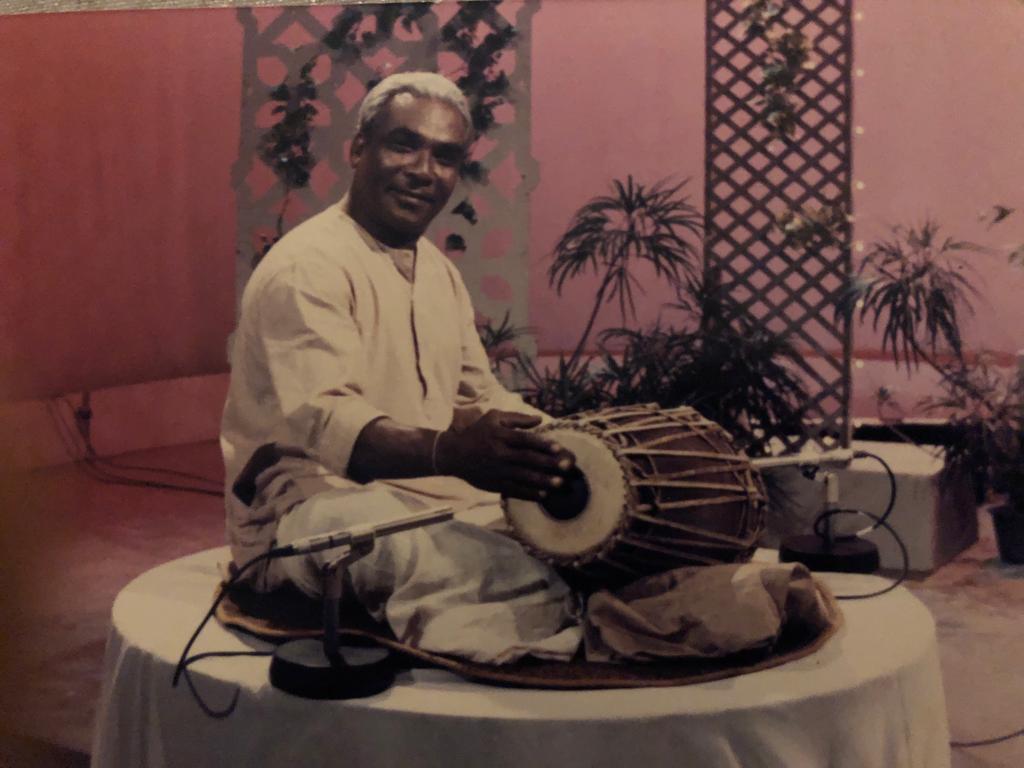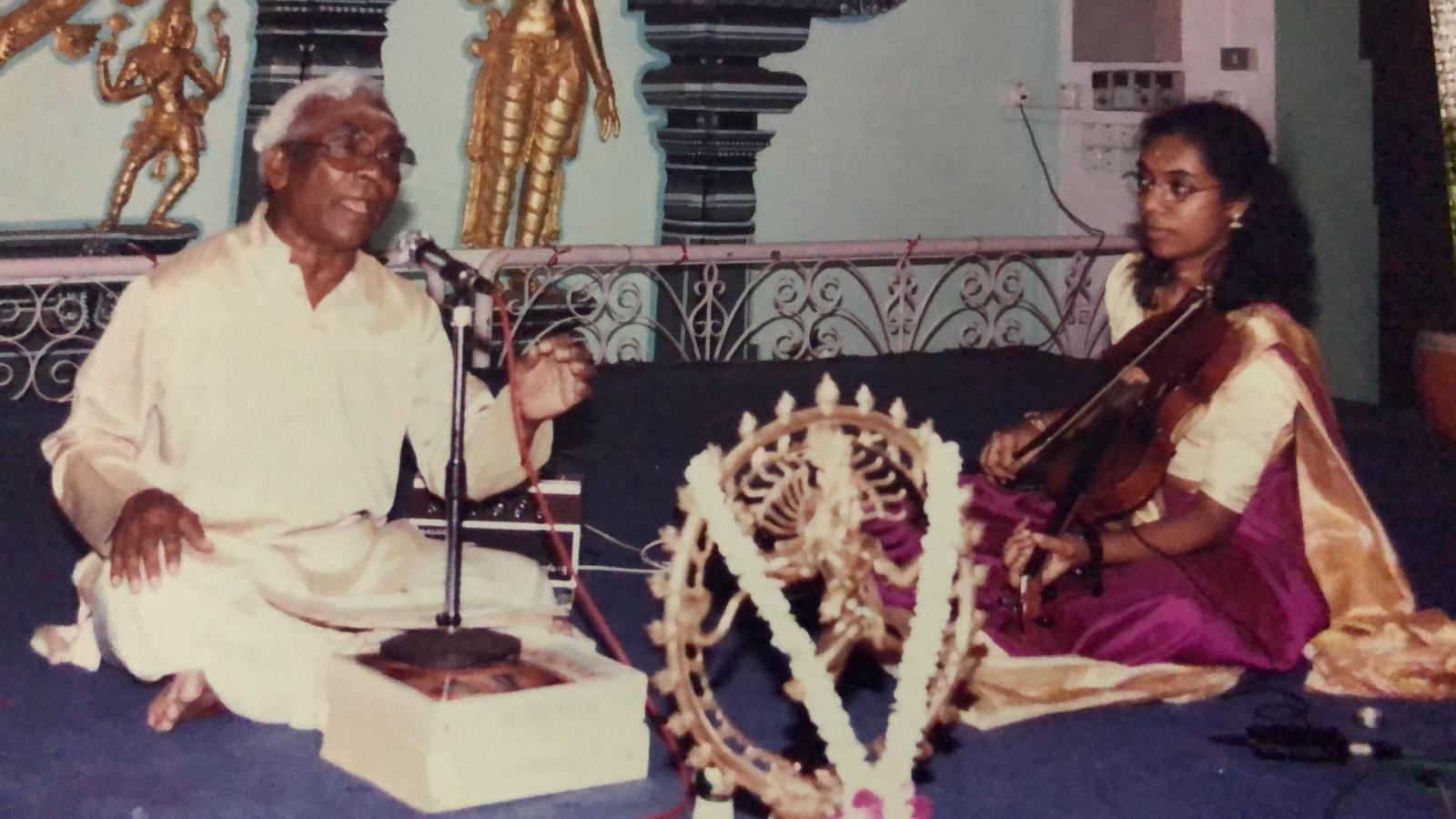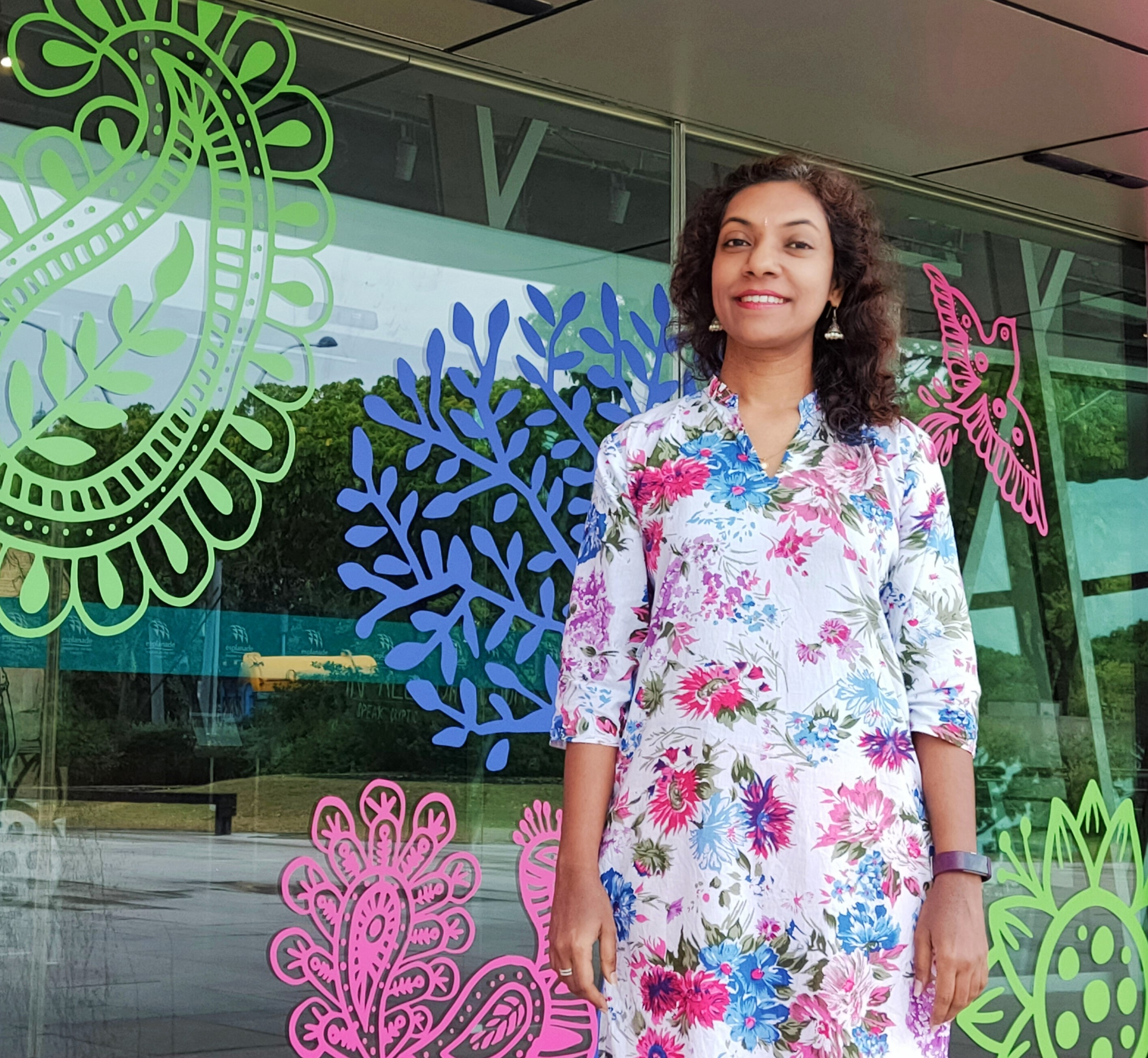Launched in 2002 as a 3 day festival, Esplanade Theatre's Indian festival of Arts – Kalaa Utsavam, became a 10-day festival in 2004 and is in its 18th edition this year.
It was in 2006 that a young, fearless and enthusiastic Rajeswari Ramachandran or Rajes as she is commonly known, joined the haloed performance arts centre. 13 years later she remains as eager to see Kalaa Utsavam add greater value to not just the Indian but the larger community in Singapore as she was on her debut year.
Connected to India caught up with the acutely publicity shy Rajes as she milled around her awe-inspiring office located within the Esplanade Theatres on the Bay which is affectionately called ‘The Durian’ by Singaporeans.
An illustrious background
Rajes’ late father, Vadivelu Ramachandran was a pioneer artist of Singapore. A carnatic vocalist and mridangist, Ramachandran played a major role in the growth of Indian music in Singapore before and after its independence. From being part of the Singapore Indian Band which performed on Radio Malaysia in the 60s to being involved with the National Dance Company formed by the Ministry of Culture to showcase the ethnic dances of Singapore, Ramachandran was at the forefront of the spread of Indian arts and culture in multi-ethnic Singapore.
In the early 1980s, the Ramakrishna Sangeetha Sabha Orchestra (RSSO) was invited by the People’s Association to form an orchestra and thus the Singapore Indian Orchestra and Choir (SIOC) was formed. Ramachandran was one of the founding members of SIOC and both of his daughters, trained in Bharatanatyam, joined him for performances. Besides dancing, Rajes played the violin while her sister played the veena as the trio toured overseas with SIOC.
The seeds for a career in the arts were thus sown by her father, says Rajes. Her father even started orchestras in primary schools, including at Braddell Primary, Rajes’ alma mater. She started formal training in fine arts from secondary school onwards and obtained her diploma from the Singapore Indian Fine Arts Society (SIFAS) in the early 90s.
Rajes wanted a job related to the arts. However in 1997, the year she entered the job market, Singapore was undergoing an economic crisis. And so she ended up working with the Europa Country Club and then with the NUS Guild House before eventually joining Esplanade in 2006.
Leading Kalaa Ustavam at Esplanade
When Apsaras Arts founder Sathyalingam Suntharalingam stepped foot on Singapore’s shores, one of the first people he met was Rajeswari’s father Vadivelu Ramachandran. Sathyalingam went on to become an advisor on the resource panel of Esplanade. In fact, he was the one who gave this grand Indian festival of arts the name Kalaa Utsavam. And it was he who invited Rajes, the daughter of his old friend, to come aboard, especially impressed with her knowledge of the arts.
Rajes joined Esplanade, and within a year she had taken charge of Kalaa Utsavam. “I gave the interview (to join Esplanade) in August 2006 and 2007 was my first festival. It was not easy but because I already had some background in arts and was very excited, there was not much room for fear and it got done,” says Rajes.
Teamwork Productions worked as the producers of Kalaa Utsavam to get participating artists from India. A few years down the line Esplanade became co-producers along with Teamwork Productions. Today, Esplanade runs Kalaa Utsavam on its own. “It took some time before we could establish certain understanding, networks and gather market knowledge.” explains Rajes.
Kalaa Utsavam can be broadly split into two components. The first is local – comprising Singapore based artists, and the second is international – bringing in overseas artists.
“The local component of Kalaa Utsavam has done well. It is pretty well set with Dream Projects by local artists and the Indoor Concourse as a platform for aspiring artists. From there they go to spaces such as the Outdoor Theatre or the Fusion Beats Mentorship Programme on to The Recital Studio,” says Rajes while mentioning the names of some of Esplanade's projects and spaces.
“Each space has its own different aesthetics and rationale based on audience, nature of programme, production requirements or choreography. It needs an understanding of the art as well as of the space available,” she adds.
It is with good understanding of all of the above parameters, that artists have been successfully scaffolded to perform in smaller spaces, with an ambition to eventually perform in the big space for a ticketed audience.
“The works of local artists are curated as well such that they stand up to the level of performance of the other programmes,” explains Rajes, giving examples of artists who have grown with Kalaa Utsavam – Nawaz Mirajkar (who is performing with Swarythm at Kalaa Utsavam 2019) started out with Chakrathon two years ago, followed by Antaragni and Taal Express in the Concert Hall; Aravinth Kumarasamy started with smaller theatre productions before doing the grand Anjaneyam last year.
Pushing the boundaries
Resting on laurels is not a term familiar to Rajes. Instead, testing and pushing the boundaries of Kalaa Utsavam is what she does best. Introducing jazz with Guitar Prasanna, blending hindustani classical music with the popular rock band Agam, presenting classic mythology but with a twist are just some of the examples from Kalaa Utsavam 2019 of ways in which she is keeping things fresh every single year. “Each year one has to look back at what has worked and also look forward to what will be accessible yet pushing the boundaries,” she says.
“Guitar Prasanna who had come earlier through SIFAS to Esplanade is also someone who is trained in jazz. So we thought why don’t we introduce a jazz component, which we had not done in the previous years… Agam with Kaushiki Chakravarthi is also a way of introducing something new. Sai Shravanan had brought together Ranjani Gayatri with Agam in Chennai and after some discussions we felt that Kaushiki might be the right choice… Marabu this year presents the history of the Tamil language in Asia, through a dance theatre by Bhaskar Arts… Anjaneyam was a very tightly wrapped production which took the familiar story of Ramayana but still managed to present it in a versatile manner with a wonderful bunch of artists. Some staples are there such as Bharatanatyam, but even there we try to see what we can do differently,” Rajes says proudly.
Experience with Kalaa Utsavam so far
One of the three cultural festivals along with – Pesta Raya – Malay Festival of Arts held during Hari Raya and Huayi – Chinese Festival of Arts held during Chinese New Year; Kalaa Utsavam – Indian Festival of Arts held during Deepavali- has been on the activity calendar of Esplanade since it opened in 2002 to serve the ethnic configuration of Singapore and to bring the community together through the arts.
Over the years, Rajes has learnt that research done ahead of time, to understand what applies in the Singapore context and what will be appreciated by the audience, is what has worked for Kalaa Utsavam.
“We learn something new each year. That's the nature of arts. It’s not predictable and always presents new permutations,” reflects Rajes. There is no template to organise Kalaa Utsavam. However, there is always a need to have a balance between the North and South (of India); the popular and the classical; the dance, music and theatre; the folk tradition and the modern and the upcoming and established artists.
“Music is the first access point, as it doesn't even need a common language. Next is dance, which can still convey a lot visually. However, theatre is something which needs language for understanding,” explains Rajes. “The work itself is what chooses the language and not the other way around, which is how excellence is kept as the final objective and not the language.”
The growth of arts and culture in Singapore
Over the years Rajes has seen, unfolding before her eyes, changes in the arts scene in Singapore. Unlike 18 years ago, today there are many individual presenters coming up with festivals.
“Suddenly you see a group coming together, getting funding, some overseas artists are announced, ticket prices are put up. Sometimes up to 40% tickets are given free, donations are accepted and there's a lot of undercutting. Kalaa Utsavam doesn’t have such strategies for marketing,” she says firmly. “We work with trustworthy agents and we cannot employ those techniques because we are very straightforward, we are government-funded and whatever we do has to be black and white.”
Kalaa Utsavam’s intent – which is to bring varied experiences specifically curated for the community – is what sets them apart from all other festivals. The objective behind the curation is that even someone who is not exposed to, nor has an understanding of an art form, can come, watch, enjoy and grow to understand it, both within and outside the community they belong to.
So what makes Kalaa Utsavam the success that it is? “It’s teamwork, not just me,” says Rajes.
Marketing is another important factor, especially with limited budgets and advertisement slots on TV. “There is no point in bringing the best of the artists if there is no audience to watch them. Everything has to work in tandem in order to make the whole festival a success and everyone has to have a role in bringing it all together,” she adds.
Esplanade also pays special attention to finding out what the audience likes and wants more of through a survey of about 600 people, conducted every year during Kalaa Utsavam. “It is still a very young audience in Singapore today. Most of them prioritise holidays, time with family, pop culture and relaxing, over and above watching shows in theatres,” says Rajes. “I would say that it is still something that we have to work on, to grow an audience, because I think Singapore’s audience is still not as developed as maybe India’s. In India, generations have been patronising and the understanding and appreciation of music is probably maybe 2 or 3 generations deep.”
Another challenge is trying to break the mentality, where you are supporting the artists and not an art form, says Rajes. With the kind of diversity that India represents it’s a tough audience to please, which is why they gather feedback from the ground. "The community is forthcoming in its feedback on the festival, with constructive feedback received, it gives us a sense of what works and what else can be done", Rajes added.
Message to the audience
Now in its 18th edition, Kalaa Utsavam has grown to become a recurring staple in the island nation’s event calendar featuring multitudes of talented local and international artists with a blend of ticketed and free programmes for audiences to enjoy.
“The programs at Kalaa Utsavam are meant to showcase the diversity of India, which the audience here can’t experience unless they travel to different parts of India. There are not just ticketed but also free programmes for all to partake and enjoy,” says Rajes.
The hard work put in by Rajes and her team has made the festival a grand showcase that takes the audience around India in 10 days without leaving the shores of Singapore.
“We're very grateful for the opportunity. Without the productions and artists making use of the space, it's just a space,” asserts Rajes.






